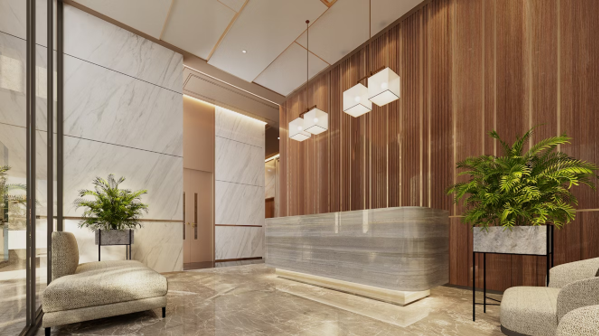The personality of a home is usually based on the architecture. It has personality and style with the use of exposed beams or textured walls. However, these details may be missed in the absence of the proper light. They are illuminated by accent lights, making the whole space lift.
Learning the behaviour of light on surfaces, homeowners are able to emphasise details and create mood and depth. Accent lighting goes beyond being visible, it is storytelling. It makes architecture look at its most brilliant!
Using Directional Lighting for Emphasis
Directional lighting is one of the best ways to accentuate features. Angled spotlights and track lighting illuminate fireplaces, columns, and artwork. The focused beam draws attention to the illuminated area by contrasting it with its surrounds.
Adjustable fixtures offer flexibility. Changing the angle lets you shift the emphasis as your space changes, making the design flexible.
Wall Washing and Grazing Techniques
The light on the surface can dramatically change its appearance. Large spaces are evenly covered with wide beams to soften the textures and illuminate the wall. It applies to smooth walls or significant features. Grazing, however, puts the light near the surface. This brings out texture, creating shadows and depth.
These are best applied to stone walls, wood panels or any element where there is strength in texture. The decision to wash or graze is based on whether you desire a subtle improvement or a dramatic effect.
Creating Layers of Light
Accent lighting should be used in combination with ambient and task lighting. It is the balance between these that makes it functional, while at the same time maintaining the atmosphere. To illustrate, overhead lighting combined with floor or table lamps creates distinct areas in a room. Such stratification allows architecture to be visible without taking over the room.
There is a balance between functionality and aesthetics with the inclusion of decorative elements, such as a brass lampshade by lights&lamps. It demonstrates that accent lighting may not only be useful but also a means of design.
Highlighting Vertical and Horizontal Lines
The lines in architecture are usually invisible, but they determine the motion of a room. These lines are emphasised by lighting the staircases, beneath the shelves or across ceiling beams. It directs motion and gives the feeling of organisation. Strip lighting and recessed LEDs are also highly effective, providing subtle yet impactful results.
Outdoor Accent Lighting
The aspects of architecture are not restricted to inside. Accent lighting is very effective in outdoor areas. Facade uplighting, column uplighting or garden wall uplighting is dramatic, whereas pathway lighting is safety oriented and attractive. The use of accent lighting outside gives the impression of the home togetherness and welcoming even late in the evening.
All in All
Accent lighting is not just a design decision. It is an art that helps to beautify homes, add depth and ambience. The appropriate techniques make sure that all features are highlighted as intended.
The elements of architecture can really be brought alive by making use of direction, layering and texture. Through some intelligent planning, lighting can make mundane areas extraordinary!


